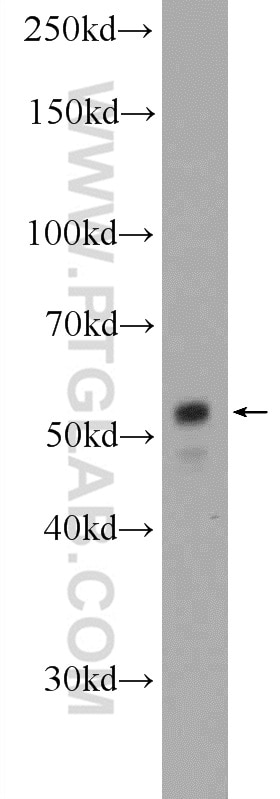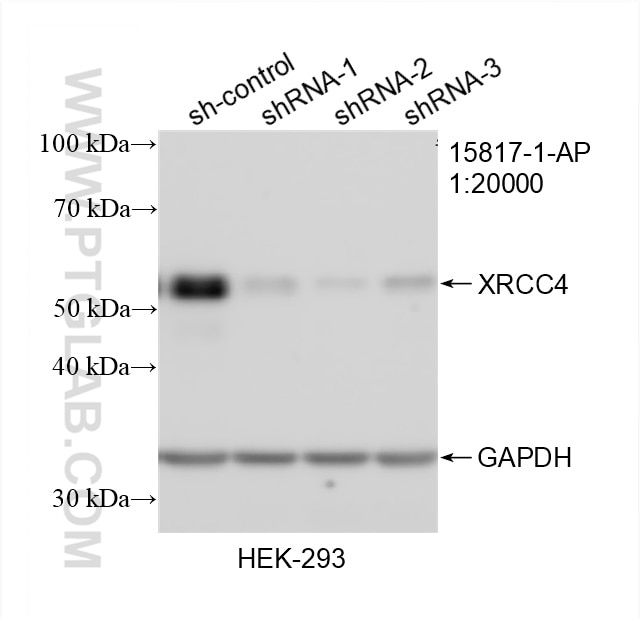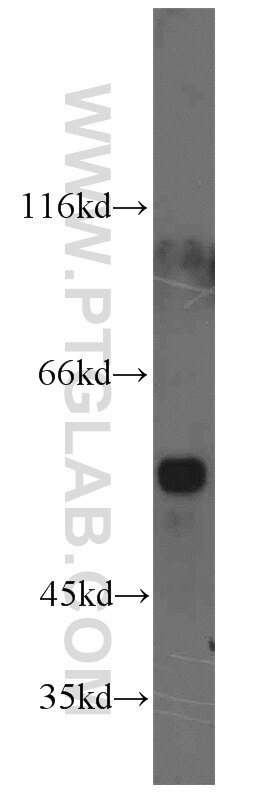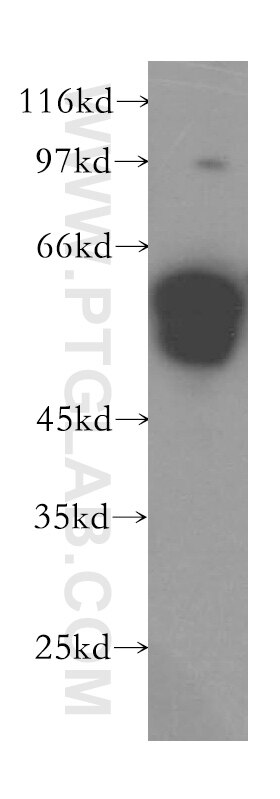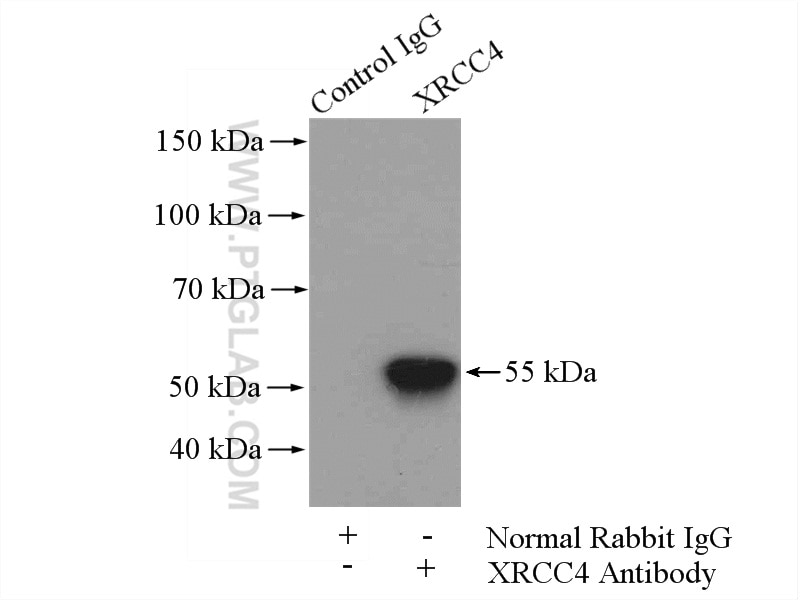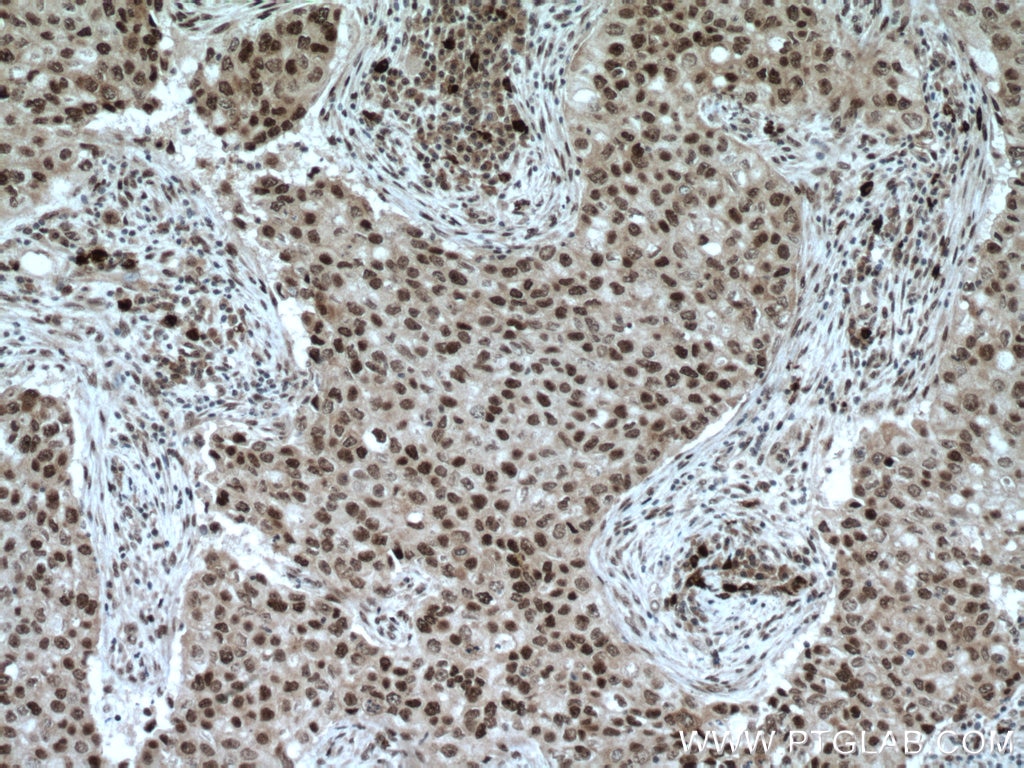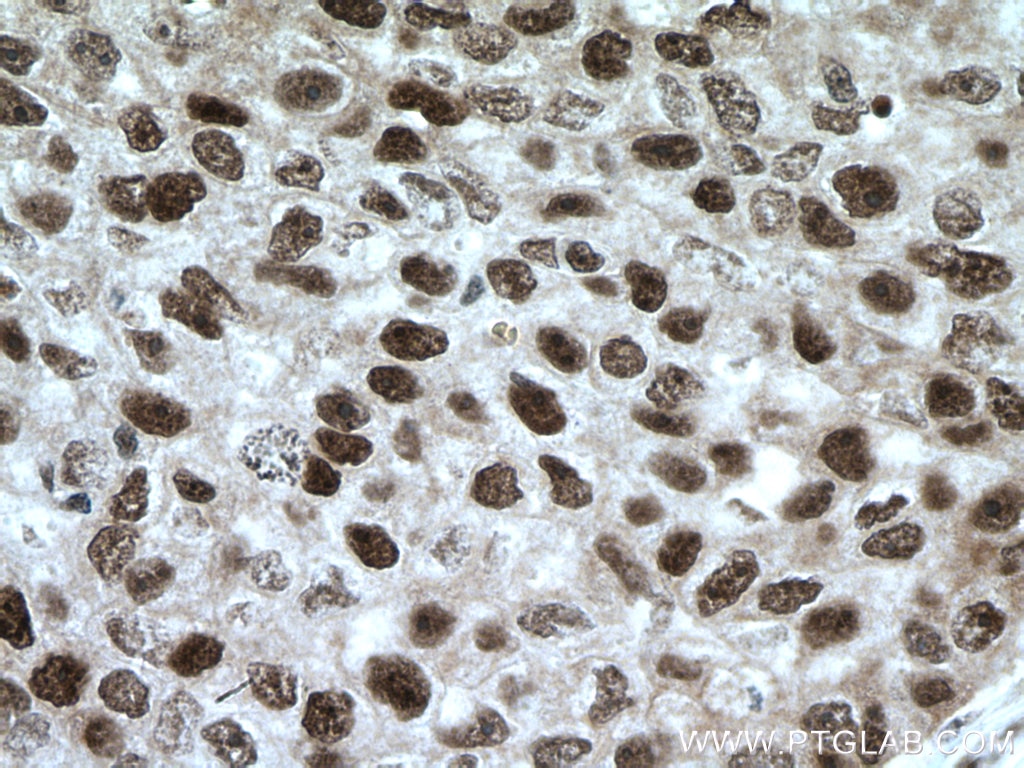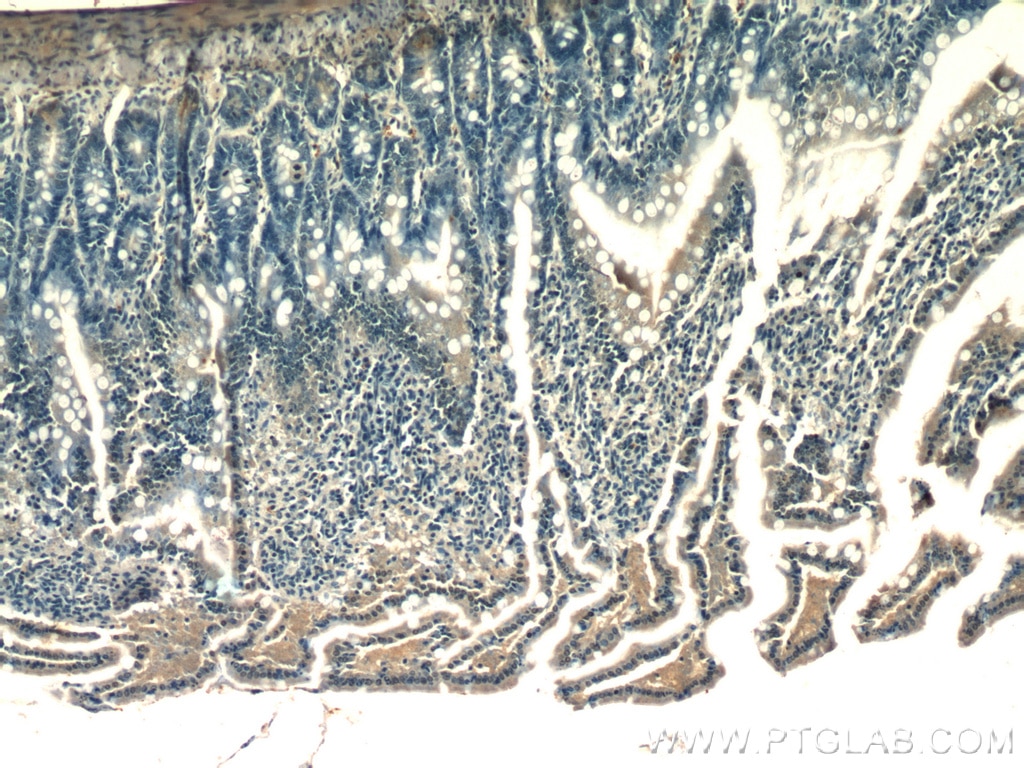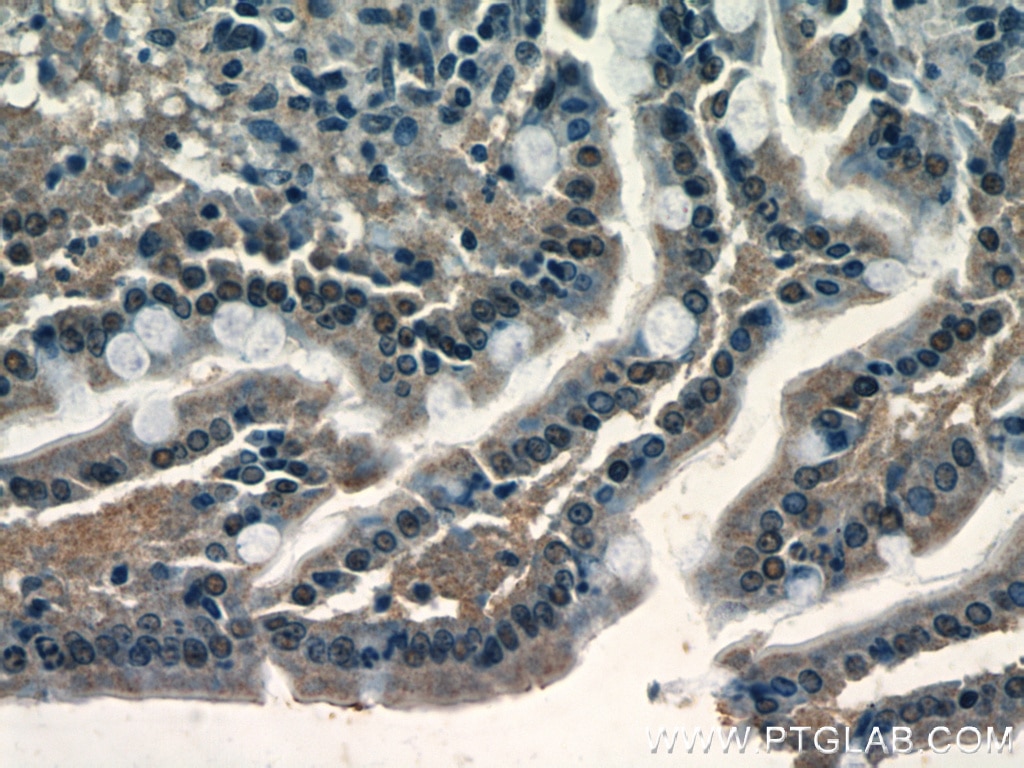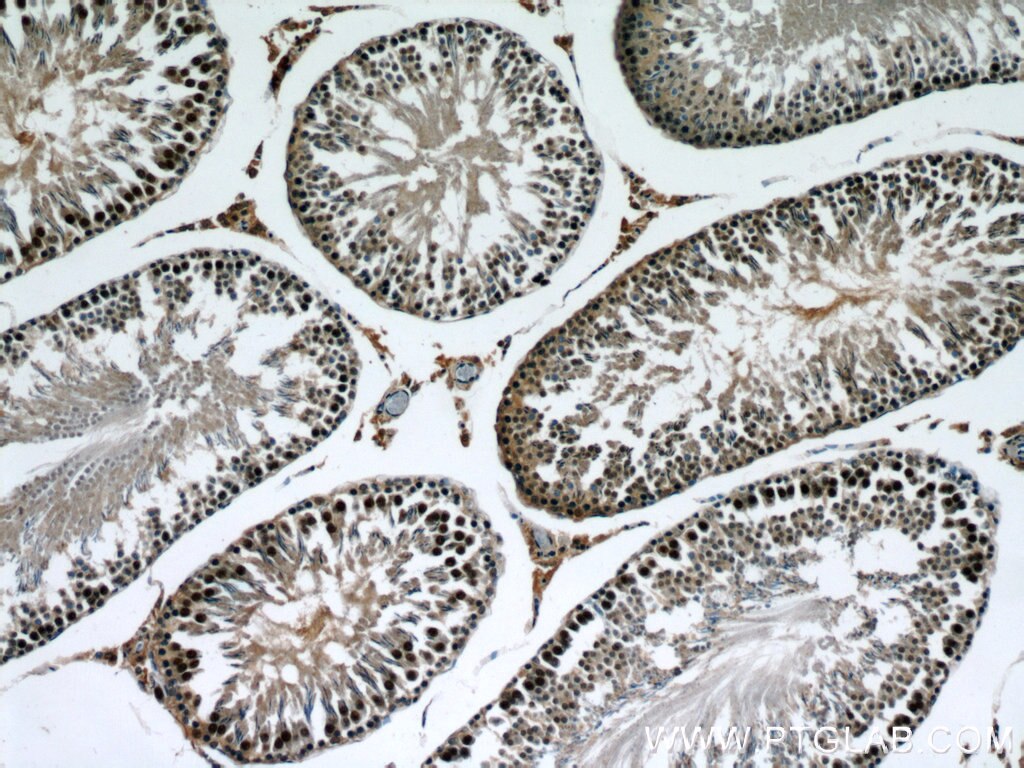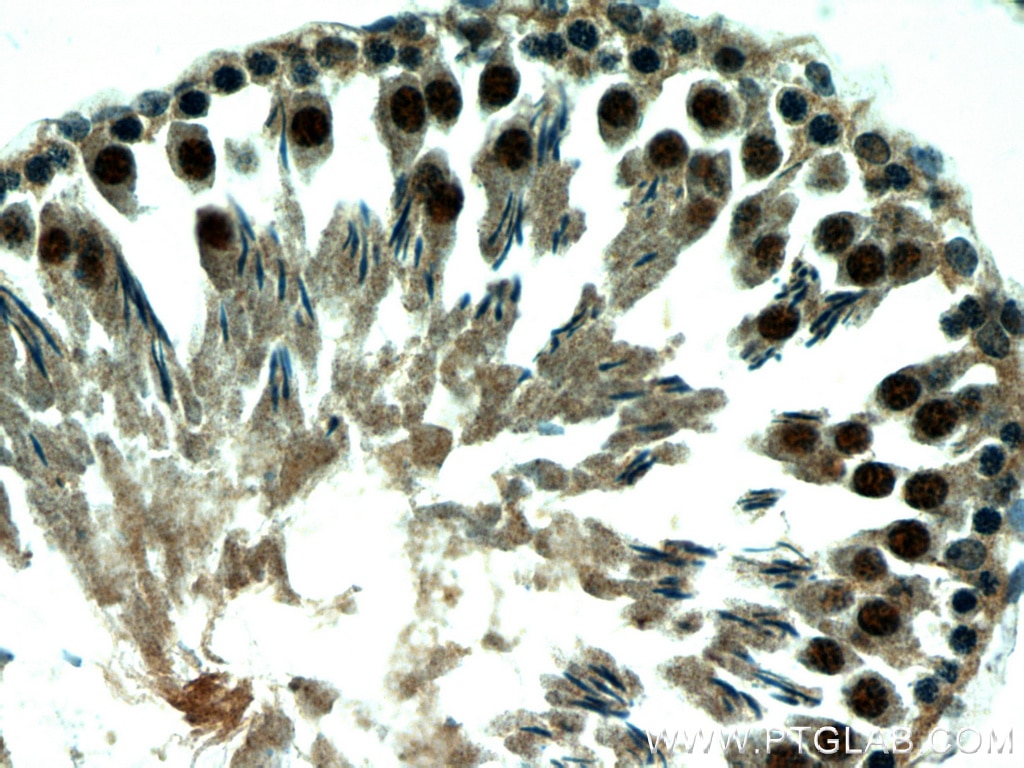Tested Applications
| Positive WB detected in | HepG2 cells, HEK-293 cells, COLO 320 cells |
| Positive IP detected in | HepG2 cells |
| Positive IHC detected in | human breast cancer tissue, rat testis tissue, rat small intestine tissue Note: suggested antigen retrieval with TE buffer pH 9.0; (*) Alternatively, antigen retrieval may be performed with citrate buffer pH 6.0 |
Recommended dilution
| Application | Dilution |
|---|---|
| Western Blot (WB) | WB : 1:500-1:2000 |
| Immunoprecipitation (IP) | IP : 0.5-4.0 ug for 1.0-3.0 mg of total protein lysate |
| Immunohistochemistry (IHC) | IHC : 1:50-1:500 |
| It is recommended that this reagent should be titrated in each testing system to obtain optimal results. | |
| Sample-dependent, Check data in validation data gallery. | |
Published Applications
| KD/KO | See 2 publications below |
| WB | See 13 publications below |
| IHC | See 2 publications below |
| IF | See 1 publications below |
Product Information
15817-1-AP targets XRCC4 in WB, IHC, IF, IP, ELISA applications and shows reactivity with human, rat samples.
| Tested Reactivity | human, rat |
| Cited Reactivity | human, mouse |
| Host / Isotype | Rabbit / IgG |
| Class | Polyclonal |
| Type | Antibody |
| Immunogen |
CatNo: Ag8606 Product name: Recombinant human XRCC4 protein Source: e coli.-derived, PGEX-4T Tag: GST Domain: 6-310 aa of BC005259 Sequence: SRIHLVSEPSITHFLQVSWEKTLESGFVITLTDGHSAWTGTVSESEISQEADDMAMEKGKYVGELRKALLSGAGPADVYTFNFSKESCYFFFEKNLKDVSFRLGSFNLEKVENPAEVIRELICYCLDTIAENQAKNEHLQKENERLLRDWNDVQGRFEKCVSAKEALETDLYKRFILVLNEKKTKIRSLHNKLLNAAQEREKDIKQEGETAICSEMTADRDPVYDESTDEESENQTDLSGLASAAVSKDDSIISSLDVTDIAPSRKRRQRMQRNLGTEPKMAPQENQLQEKEKGRKKETSEKEAV Predict reactive species |
| Full Name | X-ray repair complementing defective repair in Chinese hamster cells 4 |
| Calculated Molecular Weight | 310 aa, 35 kDa |
| Observed Molecular Weight | 55 kDa |
| GenBank Accession Number | BC005259 |
| Gene Symbol | XRCC4 |
| Gene ID (NCBI) | 7518 |
| RRID | AB_2257478 |
| Conjugate | Unconjugated |
| Form | Liquid |
| Purification Method | Antigen affinity purification |
| UNIPROT ID | Q13426 |
| Storage Buffer | PBS with 0.02% sodium azide and 50% glycerol, pH 7.3. |
| Storage Conditions | Store at -20°C. Stable for one year after shipment. Aliquoting is unnecessary for -20oC storage. 20ul sizes contain 0.1% BSA. |
Background Information
There are at least two pathways for eukaryotes to repair DNA double-strand breaks: homologous recombination and nonhomologous end joining(NHEJ). XRCC4 is one of the core machiney of NHEJ that required for double-strand break repair and V(D)J recombination. The DNA ligase IV(LIG4)-XRCC4 complex is responsible for the NHEJ ligation step, and XRCC4 enhances the joining activity of LIG4.
Protocols
| Product Specific Protocols | |
|---|---|
| IHC protocol for XRCC4 antibody 15817-1-AP | Download protocol |
| IP protocol for XRCC4 antibody 15817-1-AP | Download protocol |
| WB protocol for XRCC4 antibody 15817-1-AP | Download protocol |
| Standard Protocols | |
|---|---|
| Click here to view our Standard Protocols |
Publications
| Species | Application | Title |
|---|---|---|
Nat Commun Reciprocal regulation of RIG-I and XRCC4 connects DNA repair with RIG-I immune signaling.
| ||
Cancer Res Inhibition of ATM Induces Hypersensitivity to Proton Irradiation by Upregulating Toxic End Joining. | ||
PLoS Biol A long noncoding RNA sensitizes genotoxic treatment by attenuating ATM activation and homologous recombination repair in cancers. | ||
Cell Death Differ LRIK interacts with the Ku70-Ku80 heterodimer enhancing the efficiency of NHEJ repair. | ||
Phytomedicine Guiqi Baizhu decoction enhances radiosensitivity in non-small cell lung cancer by inhibiting the HIF-1α/DNA-PKcs axis-mediated DNA repair | ||
Toxicol Appl Pharmacol Polychlorinated biphenyl quinone induces oxidative DNA damage and repair responses: The activations of NHEJ, BER and NER via ATM-p53 signaling axis. |
Reviews
The reviews below have been submitted by verified Proteintech customers who received an incentive for providing their feedback.
FH Alexandra (Verified Customer) (07-02-2024) | For plasmid expression it works fine with 1000x dilution, but for the detection of endogenous XRCC4 I recommend the use of 500x dilution.
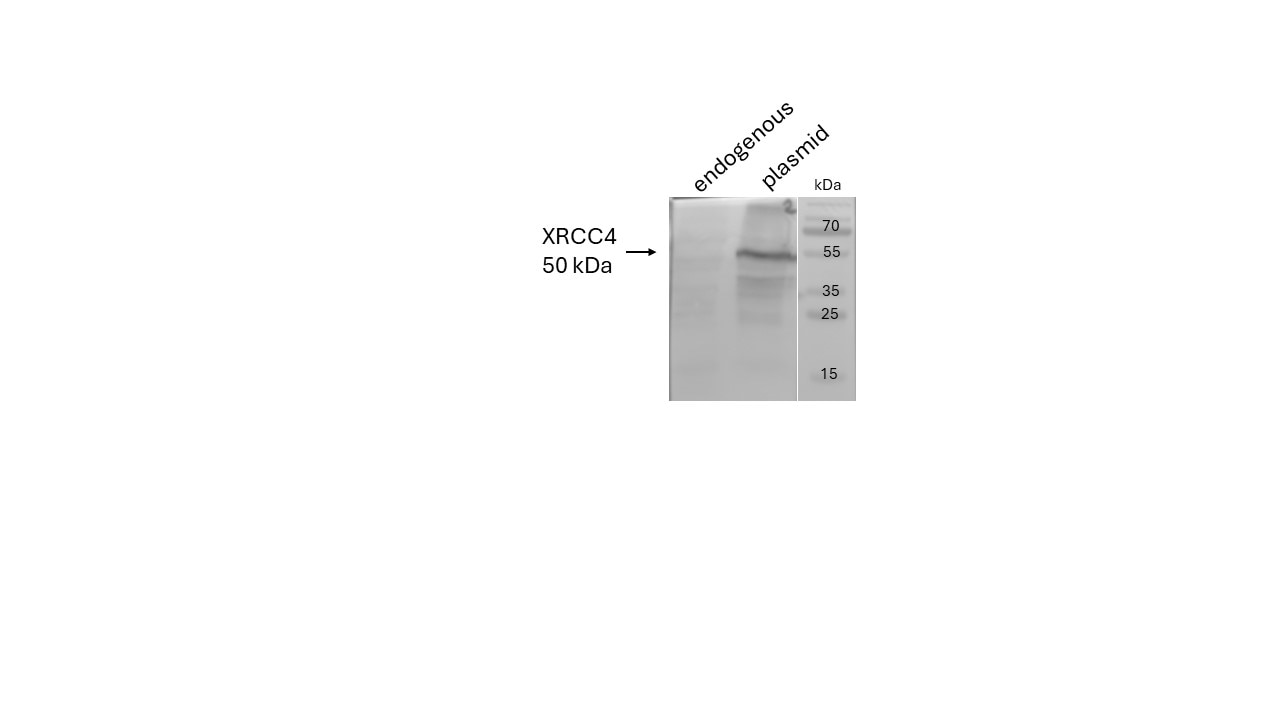 |

